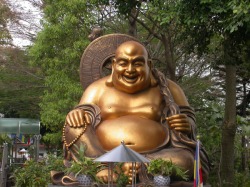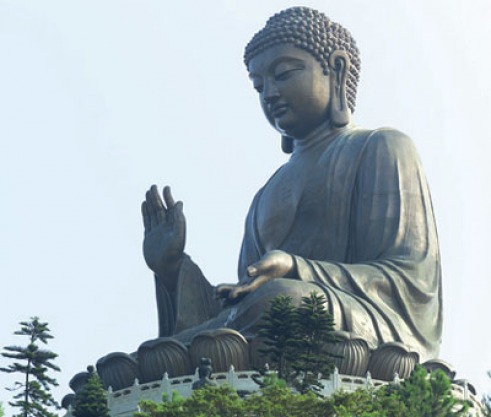#4 Explain the forms of Buddhism practiced in Japan and their effect on the country’s culture
Buddhism came to Japan in 500 CE. At first Buddhism wasn't liked by many people in the country. As time went on though Prince Shotoku became in charge and liked Buddhism very much. With Prince Shotoku's support Buddhism was able to become one of the main religions of Japan. Some of the very popular forms of Buddhism in Japan were Zen, Shingon, Tendai, and Amida.
One of the most popular forms of Buddhism was Zen Buddhism. Zen Buddhism is considered a philosophy and not a religion because they worship no actual god. The Zen Buddhists meditate to discover the meaning of life. It has its roots in Buddhism mixed with Taoism, Confucianism, and Indian spiritualism. The teaching of Zen Buddhism originated from the teachings of Siddhartha Gautama. Siddhartha Gautama was a prince and he dedicated his life to become enlightened. It is said that he went into deep meditation under a fig tree and then became Buddha. Zen Buddhism emphasized on understanding of self and the universe. It focused on self discipline, simplicity, and meditation. Followers of Zen Buddhism thought that quiet reflection was more useful than ceremonies or studying scriptures. This form of Buddhism was favored among the Samurai because they believed it would give them inner peace in battle. Artists liked the combination of simplicity and boldness in Zen Buddhism. These features were reflected in their drawings by only using black ink and making strong dark lines.
Tendai Buddhism focused on reading scriptures and texts, and was brought to Japan by Jianzhen. Jianzhen set up a school that taught about forms of Buddhism but this school was not very popular so Tendai didn’t affect the people of this region very much at first. Then a monk named Saicho returned from China with the new Tendai texts and made a temple on Mt Hiei and created what is now known Japanese Tendai. Tendai Buddhsim focused on intensive studies of Buddhist scriptures. This religion was suitable for people who could learn easily from studying from scriptures. Shingon Buddhism arose around 794-1184. This form of Buddhism came about in Japan when a monk named Kukai went to China and studied forms of Buddhism there. Just like Jianzhen, he brought back many scriptures and texts. He developed his own doctrine of Buddhism and form of practice. This form of Buddhism that he created was called Shingon. Kukai then formed his monastery on the mountain of Koya. Shingon Buddhism attracted followers who liked to preform rituals. One of these rituals was the Kechien Kanjo. This was the Shingon Buddhists initiation ceremony.Both Shingon and Tendai Buddhist ideas were reflected in Japanese poetry and writing.
Amida Buddhism believed in salvation after death in a Pure Land. Amida Buddhism was not a philosophy like Zen but a religion. Amida Buddhism worshiped Buddha as a God. Amida Buddhism was a more ideal form of Buddhism for women because unlike the other forms of Buddhism, women were allowed to be priestesses of Buddhism. Amida Buddhism also required a lot of faith. They had to believe that they would be saved by Amida Buddha when they died. Amida Buddhism affected the Japanese artwork. The artwork detailed pictures of the tortures of ten levels of Hell, a pleasures of Paradise, and the transcendent beauty of Amida Buddha.
Buddhism affected the Japanese culture, it influences the Japanese religion, the artistic and political spheres. Although it did not have a strong start in Japan it eventually became a strong religion in Japan. Buddhism had a calming effect on many nobles and became a political tool to gain power in the court. Buddhism thought became integrated with the Shinto beliefs. Many of the Japanese art work reflects the Buddhist ideas.


